7th March 2024
IFFO attended the North Atlantic Seafood Forum held in Bergen, Norway, from the 5th to the 7th March. IFFO representatives spoke at several sessions, the Aquafeed Industry News, the Marine Ingredients - Challenges and Opportunities, and the Pelagic Summit.
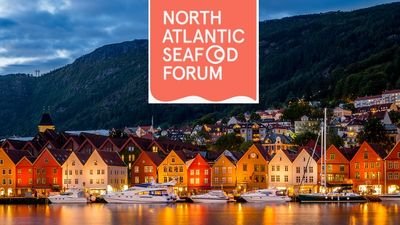
"We need flexibility and resilience"
With more than ten hours of conferences dedicated to feed, there were plenty of opportunities to dive into the complexities of our sector. The feed producers set the scene, looking ten years back from now, at a time when their focus was mostly on diversifying the feed ingredients basket, improving growth of the fish and reducing feed conversion ratio. Therese Log Bergjord (Skretting) made it clear that fish health, novel ingredients and social impact in supply chains are now on the table although in Norway, "self-imposed restrictions have not helped increase raw materials flexibility and circularity". Helene Ziv-Douki (Cargill) added that 86Mt land animals byproducts produced in Norway cannot be used. "FCR today is at 1.25. Our dream target is 0.9. Requirements are to reduce over-feeding, treatments, mortality, and optimise nutrition through more precise nutrition".
Precision nutrition is now core to formulation strategies. Indeed, today, different feeds are produced for different species and environments based on variable nutrient and energy specifications. With a precision nutrition approach, marine ingredients are being used more strategically, where they leverage greatest value, therefore improving the efficiency of the feeding process, including its environmental footprint.
The role of nutrition in fish health
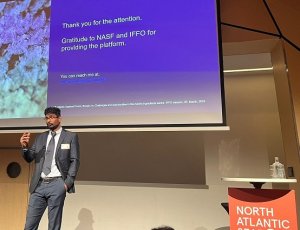 Antony J Prabhu Philip (Nofima) delivered a fascinating presentation, exploring how nutrition and physiology underly fish health in salmon: "Fishmeal and fish oil are more than just bulk protein and energy sources. Judicial use of these marine resources is essential". Looking at specific health challenges, he insisted on the role of Zinc and Omega-3 in improving skin epidermal structure and function. "New knowledge on the role of components in fishmeal and fish oil is being discovered, which needs consideration in feed formulations and dietary recommendations" he concluded.
Antony J Prabhu Philip (Nofima) delivered a fascinating presentation, exploring how nutrition and physiology underly fish health in salmon: "Fishmeal and fish oil are more than just bulk protein and energy sources. Judicial use of these marine resources is essential". Looking at specific health challenges, he insisted on the role of Zinc and Omega-3 in improving skin epidermal structure and function. "New knowledge on the role of components in fishmeal and fish oil is being discovered, which needs consideration in feed formulations and dietary recommendations" he concluded.
Environmental sustainability assessment
Dr Brett Glencross (IFFO) stressed the need for more objectivity: "You cannot manage, what you cannot measure: life cycle assessment is our best path forward" he emphasized, insisting that all ingredients in the supply-chain need to engage with the Global Feed Lifecycle Assessment Institute.
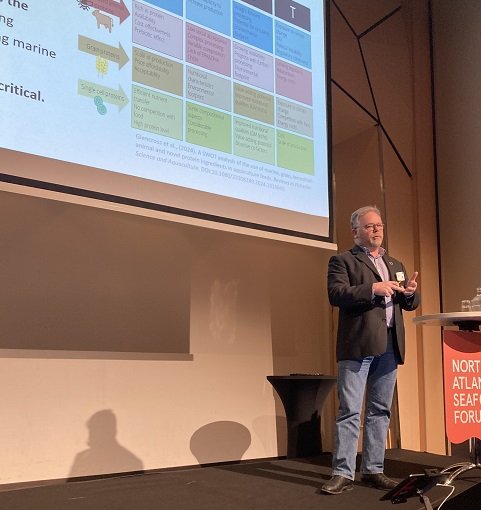 "There is no such thing as the perfect ingredient, each of them has its strengths and weaknesses", he said, presenting the findings of a recent paper whose authors explore the use in aquafeeds of marine, grain, terrestrial animal by-product and a range of novel (e.g., bacterial and yeast) resources being considered as potential protein feedstuffs.
"There is no such thing as the perfect ingredient, each of them has its strengths and weaknesses", he said, presenting the findings of a recent paper whose authors explore the use in aquafeeds of marine, grain, terrestrial animal by-product and a range of novel (e.g., bacterial and yeast) resources being considered as potential protein feedstuffs.
This call for harmonisation of assessment methods was echoed by many speakers including Grieg Seafood: "We need to work on improving the sustainability of existing feed ingredients, not only focusing on novel ingredients. Common reporting is key to improving supply chains", Kristina Furnes insisted, alluding to the newly launched ESG risk assessment tool by WWF and Global Salmon Initiative.
Bertrand Charron (Aquaculture Stewardship Council) provided his perspective about the "meandering timeline of EU regulations": more than 1,700 disclosure points are requested by those different existing frameworks. "We welcome a more holistic and accountable approach to addressing social and environmental impacts. CSRD sustainability reporting introduces a holistic narrative. It is only step 1 though. Other upcoming tools will include due diligence, green claims, EU taxonomies, sustainable food systems framework etc".
Einar Wathne provided an overview of the Norwegian government's "mission for sustainable feeds". Reducing greenhouse gas emissions from 2024 by 55% within 2034 and preserving biodiversity are core objectives, as well as prioritising locally sourced materials. This strategy is expected to support Norway's ambition to reach 5 million tonnes of farmed salmon produced by 2050, from just over 1 million tonne today. "What is needed is political anchorage, industrial involvement and societal engagement. We believe that Norway must become a first mover for green feeds". The report, submitted in November 2023, will be core to the upcoming Governmental Aquaculture White Paper.
Marine ingredients' current state of play
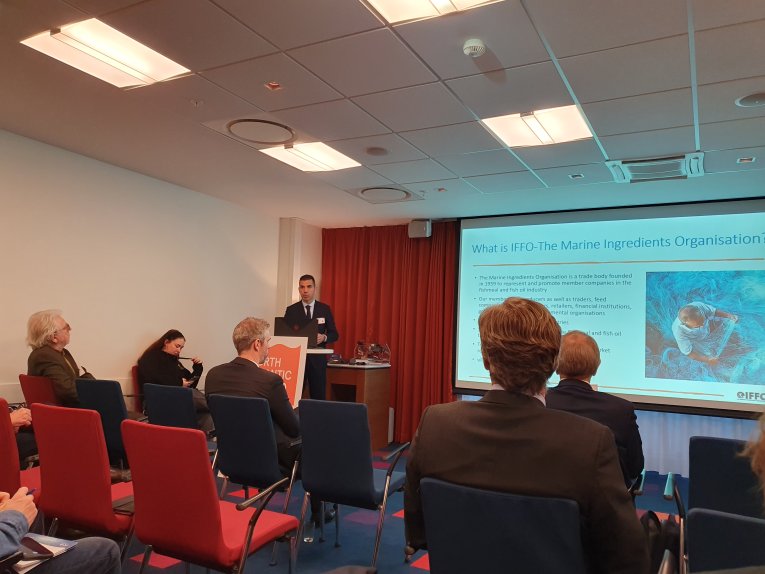 The Pelagic summit was an opportunity to look at the specific contribution of the many species which contribute to marine ingredients production: "In 2022, 90% of fishmeal and 70% of fish oil came from pelagic species", Dr Enrico Bachis (IFFO) explained. "In a year without the El Niño event, 20 to 25% of fishmeal production comes from Peru but if we only consider fishmeal made from only pelagic species, Peru accounts for 30% of global supply of marine ingredients", he added. The drop in production in an El Niño year amounts to 60% in fishmeal and 90% for fish oil for the period between 2021-23. Globally this led to an estimated drop in pelagic output in 2023 by 15% (fishmeal) and 7% (fish oil). "We are expecting a rebound in Peru for 2024".
The Pelagic summit was an opportunity to look at the specific contribution of the many species which contribute to marine ingredients production: "In 2022, 90% of fishmeal and 70% of fish oil came from pelagic species", Dr Enrico Bachis (IFFO) explained. "In a year without the El Niño event, 20 to 25% of fishmeal production comes from Peru but if we only consider fishmeal made from only pelagic species, Peru accounts for 30% of global supply of marine ingredients", he added. The drop in production in an El Niño year amounts to 60% in fishmeal and 90% for fish oil for the period between 2021-23. Globally this led to an estimated drop in pelagic output in 2023 by 15% (fishmeal) and 7% (fish oil). "We are expecting a rebound in Peru for 2024".
Demand remains strong from competing markets: 88% of fishmeal and 74% of fish oil were used in 2023 by the aquaculture sector, with nutraceuticals ranking second, at 16%, in terms of fish oil use. Circularity is an increasing component of the marine ingredients industry, with 38% of global production being made from fish byproducts.
Responsible sourcing
The North Atlantic Seafood Forum also hosted a presentation by the Global Roundtable on Marine Ingredients about West African fisheries, featuring its Independent Chair, Árni Mathiesen, and Jorge Diaz (Skretting). Both highlighted the need for the industry to remain involved in the region through the Mauritania Fishery Improvement Project (FIP).
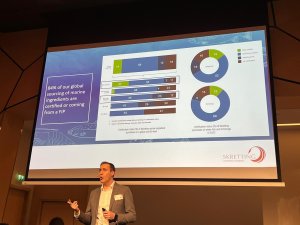 "Today our customers, but also other stakeholders are increasing the focus on how we source our marine ingredients and they request that we disclose the volumes of marine ingredients, increase the use of by-products and only source certified ingredients or ingredients that are part of a FIP" Jorge Diaz stated. "To get there we launched an industry-first marine ingredients sourcing policy, which provides clear guidance, action plan and timeline to reach our target of sourcing only marine ingredients that are certified or coming from a FIP by the end of 2025."
"Today our customers, but also other stakeholders are increasing the focus on how we source our marine ingredients and they request that we disclose the volumes of marine ingredients, increase the use of by-products and only source certified ingredients or ingredients that are part of a FIP" Jorge Diaz stated. "To get there we launched an industry-first marine ingredients sourcing policy, which provides clear guidance, action plan and timeline to reach our target of sourcing only marine ingredients that are certified or coming from a FIP by the end of 2025."
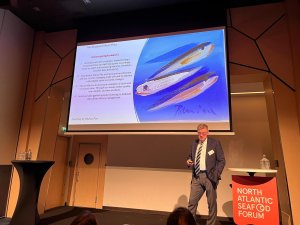 Members of the Global Roundtable want to be part of the solution to issues raised by local communities regarding traditional value chain losing out in a resource and consumer competition. "They recommend an action plan based on key principles: improved governance, improved enforcement of rules and regulations, improved management" Árni Mathiesen explained. More information about the Global Roundtable's proposed action plan can be read here.
Members of the Global Roundtable want to be part of the solution to issues raised by local communities regarding traditional value chain losing out in a resource and consumer competition. "They recommend an action plan based on key principles: improved governance, improved enforcement of rules and regulations, improved management" Árni Mathiesen explained. More information about the Global Roundtable's proposed action plan can be read here.








